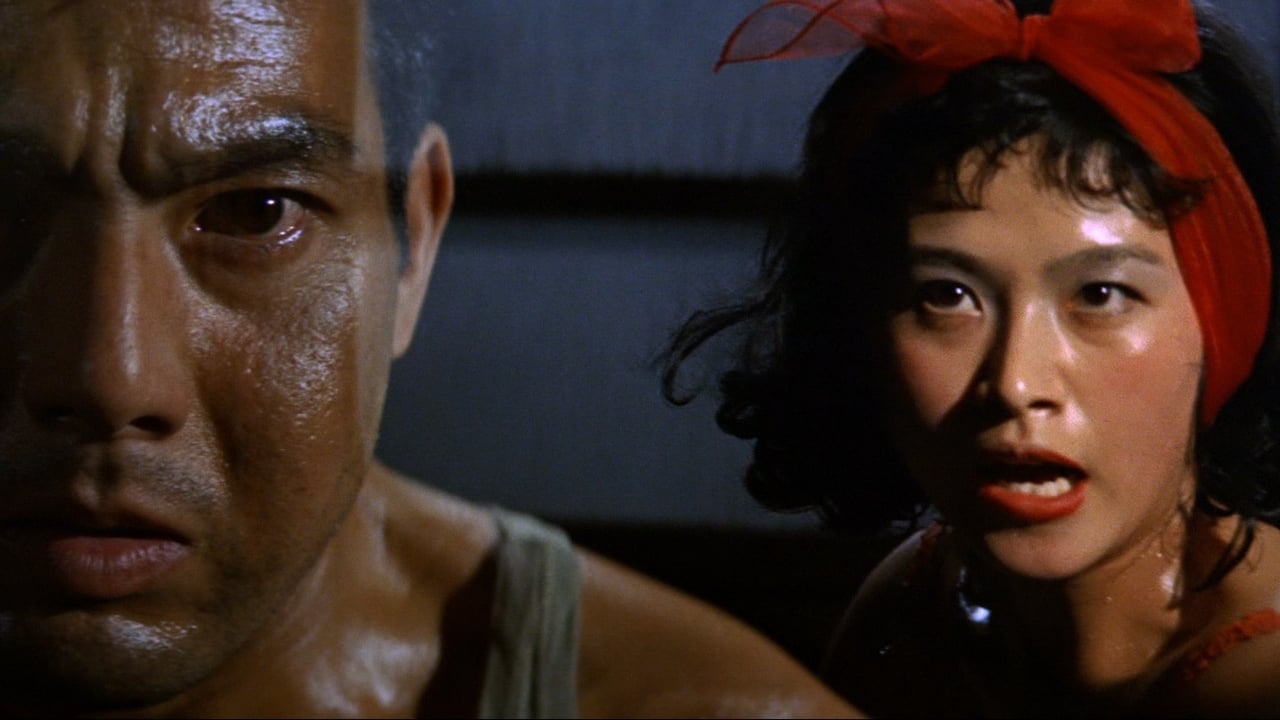Uriah43
This film proves that good directors are able to make first-rate films in spite of very modest budgets if they have the desire and creativity necessary to succeed. Essentially, this movie concerns the plight of a small number of prostitutes who are trying to survive in post-World War II Tokyo during the American occupation. With food, medicine, shelter and employment in scarce supply those without any resources became like animals just trying to stay alive. So 5 or 6 young prostitutes take refuge in a bombed out basement and agree to live by a very strict code which forbids, among other things, sex without payment. Those who fail to comply are tortured and then thrown back onto the cold streets without any means of protection or support. At any rate, things are going well for this small group until a war-weary Japanese soldier arrives suffering from a gunshot wound. Now, rather than giving away the entire plot I will just say that the director, Seijun Suzuki, uses various techniques (like different colors to differentiate the women) to create something quite impressive out of almost nothing. Just be advised that there is some nudity and violence that wasn't usual for this period in time. But even here he uses symbolism in many cases so that it doesn't seem crass or vulgar. In short, this is a picture that I recommend to those who can appreciate artistry and ingenuity and don't depend on special effects and CGI for their film entertainment. But it's not for the squeamish.
goldgreen
An exploitation film with a brain. We see nude women tastefully lit, kinky violence - women beating other women and the low life of Tokyo outdoing each other in even more dastardly acts of treachery and heartless thuggery. The intelligence comes with the strong impact of the women dressing in vibrant red, purple, yellow and green to reflect their characters. Having the prostitutes live in a building that is an analogy for post-war Japan is even smarter. The building is bombed out, its occupants desperate, many have lost family in the war and for some the sight of people burned to death has made them individually heartless, desperate and mad. The fact that most of them live in the basement indicates that they have plummeted into the depths of hell. For cinema goers in Japan in 1964, just enjoying the fruits of the boom years for their rebuilt economy and also a new found pride and respectability, this must have been a sobering but also satisfying reminder of where they had been and how far they had come.
Meganeguard
After World War II came to an end, a great number of Japan's major cities were left in shambles. However, the Japanese began to rebuild almost immediately after the war came to the end. The earliest post-war settlements were shantytowns and the remains of scorched buildings. Because of the chronic lack of food, most individuals were forced to purchase food at the black market. Although illegal, the black market was the only source of essential foodstuffs. Also, during this time period, a number of women, whose fathers, brothers, and sons were killed during the war, were forced into prostitution to support themselves. With tens of thousands former Japanese soldiers and American soldiers swarming into the country, there were definitely enough men to garner money from.Seijun Suzuki's 1964 film takes place in one of these shantytowns and it follows the lives of five such prostitutes: The refined Machiko; the tattooed Sen; the chubby Roku; the boisterous Mino; and the youngest of the group Maya. The film begins with Maya fleeing from a man who had tried to pimp her to an American soldier, however, luckily for her Sen intervenes. Struggling to survive, Maya follows Sen back to the latter's home and soon joins Sen and her fellow prostitutes in peddling flesh. However, unlike other prostitutes, the women are able to keep their money because they do not work for a pimp. Although they seem to be close, the women can be quite vicious. Their sole rule is that no member may sleep with a man without receiving payment. If one breaks the rule, one is stripped naked, tied up, and beaten. Although far from ideal, the women seem to get along decently well until a man Ibuki Shintaro, Shishido Joe, comes into their ranks. Heavily muscled and of a demanding nature, each one of the prostitutes fall for the ex-soldier and this of course endangers this little circle of "friends." Like many of his other films, Suzuki's Gate of Flesh is quite violent. While not nearly as vicious as Miike films, Gate of Flesh caused quite a stir when it was released in 1964. While the beating scenes are moderately tame, there is a graphic scene in which a cow is slaughtered.In my opinion, the most striking aspect of this film is the use of color. Each prostitute wears a specific color and this makes for some quite striking scenes. Sen, Kasai Satoko, is quite striking in red. This is an interesting film that might interest those who would like to see a cinematic version of Japan's early postwar years.
shishido
Yet another brilliant work from director Suzuki Seijun, who manages to create (in almost every frame) a world in which lurid pulp paperback cover paintings have come to life! This tale of the rampant desperation of mere existence in post-WWII Tokyo is simply stunning on all counts. "Nikutai no Mon" ("Gate of Flesh") is both bleakly realistic, and flamboyantly artistic. It is brutal, shocking, funny, and depressing--sometimes all at once! Excellent cinema--not to be missed by any Japanese film buffs.


 AD
AD



